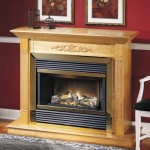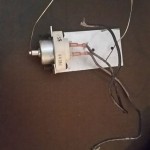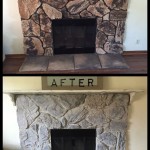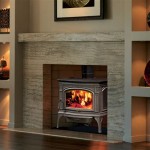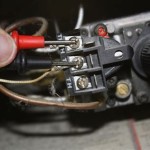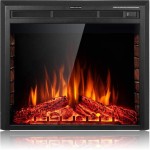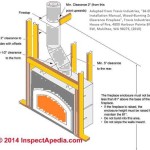Heat Reflector Fireplaces: Enhancing Efficiency and Ambiance
Fireplaces have long been a focal point in homes, providing warmth, visual appeal, and a sense of comfort. However, traditional fireplaces often suffer from inefficiency, allowing a significant portion of the generated heat to escape up the chimney. This inefficiency has led to the development of various modifications aimed at improving heat retention and distribution. Among these, the heat reflector fireplace stands out as a practical and effective solution.
A heat reflector fireplace, as the name suggests, incorporates a reflective surface, typically made of metal or ceramic, strategically positioned behind the fire. This reflector redirects radiant heat that would otherwise be lost up the chimney back into the room. The principles behind this design are rooted in the fundamental physics of heat transfer, specifically radiation.
Radiant heat is a form of electromagnetic radiation that travels directly from a heat source to an object without necessarily heating the intervening air. Traditional fireplaces emit radiant heat in all directions, including upwards. Without a reflector, a substantial portion of this heat is carried away by the rising hot air and exits through the chimney, contributing to heat loss and reduced overall efficiency. By intercepting and redirecting this radiant heat, a heat reflector significantly improves the amount of usable warmth delivered to the living space.
Maximizing Radiant Heat
The primary function of a heat reflector fireplace is to maximize the utilization of radiant heat. The reflective surface acts as a barrier, preventing radiant heat from escaping directly into the chimney. The surface material is carefully chosen for its ability to reflect a high percentage of infrared radiation, the primary component of radiant heat. Highly polished metals, specialized ceramics, and even tempered glass treated with reflective coatings can be used. The angle and curvature of the reflector are also critical design elements. They are typically configured to direct the reflected heat outwards and downwards, effectively distributing the warmth to the occupants of the room. This targeted heat distribution helps to create a more comfortable and evenly heated environment.
The shape of the reflector is also an important factor. A curved reflector, for example, can focus the radiant heat more effectively than a flat surface. The optimal curvature depends on the dimensions of the fireplace and the desired area of coverage. Some heat reflector fireplaces incorporate adjustable reflectors, allowing users to fine-tune the direction and intensity of the reflected heat. This adaptability can be particularly useful in rooms with varying layouts or seating arrangements.
Beyond the reflector itself, the design of the firebox and the chimney can also contribute to overall heat efficiency. A well-insulated firebox helps to retain heat, reducing heat loss through conduction. A properly sized and designed chimney ensures adequate draft for efficient combustion while minimizing heat loss through convection. The combined effect of these design elements can significantly improve the performance of a heat reflector fireplace.
Enhanced Energy Efficiency
One of the most significant advantages of a heat reflector fireplace is its enhanced energy efficiency. By redirecting radiant heat back into the room, it reduces the amount of fuel needed to maintain a comfortable temperature. This can translate into significant cost savings over time, particularly for those who rely on their fireplace as a primary or supplementary heating source. The increased efficiency also reduces the environmental impact by decreasing the amount of wood or other fuel burned, leading to lower emissions of pollutants.
The energy savings associated with a heat reflector fireplace can vary depending on several factors, including the size and design of the fireplace, the type of fuel used, and the insulation of the home. However, studies have shown that heat reflectors can improve fireplace efficiency by as much as 30% or more. This improvement is especially noticeable in older, less efficient fireplaces. Retrofitting an existing fireplace with a heat reflector is often a relatively inexpensive and straightforward way to improve its energy performance.
Furthermore, the increased energy efficiency of a heat reflector fireplace can contribute to a more sustainable heating solution. By reducing reliance on fossil fuels, it helps to mitigate the effects of climate change. This makes it an attractive option for homeowners who are looking to reduce their carbon footprint and embrace more eco-friendly heating alternatives.
Aesthetic and Functional Integration
While the primary focus of a heat reflector fireplace is on improving energy efficiency, its design can also enhance the aesthetic appeal of the fireplace. Modern heat reflector fireplaces are available in a wide range of styles and finishes to complement different interior design aesthetics. The reflective surface can be incorporated seamlessly into the fireplace design, becoming an integral part of its overall appearance.
The use of decorative metals, such as copper, brass, or stainless steel, can add a touch of elegance and sophistication to the fireplace. Alternatively, ceramic reflectors can be customized with various colors and patterns to match the surrounding décor. Some heat reflector fireplaces even feature illuminated reflectors, which can create a warm and inviting ambiance in the room.
In addition to its aesthetic benefits, a heat reflector can also serve a functional purpose by protecting the back wall of the fireplace from excessive heat exposure. This can help to prolong the life of the fireplace and prevent damage to the surrounding structure. The reflector also helps to distribute the heat more evenly, reducing the risk of overheating in certain areas of the fireplace.
The installation of a heat reflector fireplace is typically a straightforward process that can be completed by a qualified professional. In some cases, existing fireplaces can be retrofitted with a heat reflector insert, eliminating the need for a complete fireplace replacement. This makes it a cost-effective and convenient way to improve the efficiency and aesthetics of an existing fireplace.

Heat Reflectors Frontier Fireplaces

Fireplace Reflector

How To And Why You Should Use A Fireplace Heat Reflector Ehow

Fireplace Hoods Heat Deflectors Custom

Fireplace Hood Canopy Or Heat Deflector Project Small House

Fireplace Reflector

Enhance Your Fireplace With A Wood Stove Heat Shield Charnwood Stoves

Fireplace Reflectors Improve Wood Burning Heat Efficiency

Heat Reflector Shield Fireback 304 Stainless Steel Chimney S Inc

Reflective Fire Backs Grate Wall Of
Related Posts

